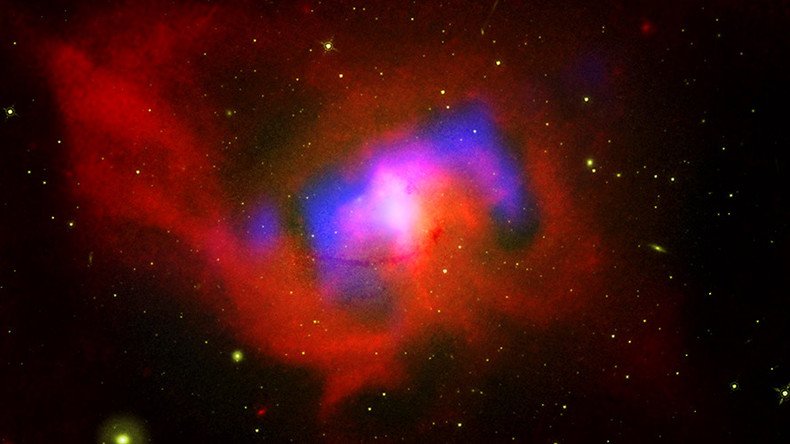NASA telescopes detect ‘heartbeat’ of distant black hole (PHOTO)

New data suggests that a supermassive black hole can pump material out into its host galaxy in an action reminiscent of a beating heart.
NASA telescopes found the giant black hole in NGC 4969, a galaxy at the center of a cluster of hundreds some 145 light years from Earth.
'Cosmic collisions': Black holes tear stars apart 100 times more often than thought - study https://t.co/kWpKNrpw6dpic.twitter.com/iBYO77QjIC
— RT (@RT_com) March 1, 2017
Scientists examining data collected by space agency's Chandra X-ray Observatory telescope detected repeated bursts of energetic particles generated by the black hole. These particles then created ventricle-like cavities in the hot gas that fills the space between galaxies.
The bursts, which are estimated to happen every five to 10 million years, then produce shock waves which travel tens of thousands of light years.
The event is said to resemble a beating heart pumping blood outward into the body via the arteries.
A black hole heart, located 145 million light years from Earth, is pumping material into the galaxy it inhabits: https://t.co/X4IFgfMY8Xpic.twitter.com/LWsC72XKGw
— NASA (@NASA) April 19, 2017
A composite image released by NASA shows hot gas colored in red while high-energy particles produced by the black hole-powered jets are colored in blue.
Researchers also found "a sequence of curved, and approximately equally spaced, features" in the hot gas. They believe these may have been caused by sound waves generated by the black hole's bursts.
READ MORE: Black hole cam: Astronomers launch mission to snap first ever image of star eater












